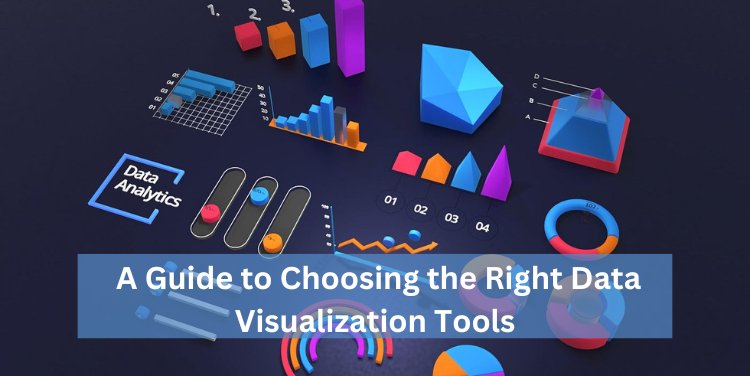A Guide to Choosing the Right Data Visualization Tools

In today's data-driven world, the ability to effectively communicate insights is paramount. Data visualization plays a crucial role in this process, enabling businesses to turn raw data into actionable insights. However, with a plethora of data visualization tools available, choosing the right one can be daunting. To help you navigate this landscape, we've put together a comprehensive guide to selecting the perfect data visualization tool for your needs.
Understand Your Data and Goals
Before diving into the world of data visualization tools, it's essential to have a clear understanding of your data and objectives. Ask yourself the following questions:
What type of data do you have? Is it numerical, categorical, temporal, spatial, or a combination?
What insights are you trying to uncover? Are you looking to identify trends, patterns, correlations, or outliers?
Who is your audience? Consider the technical proficiency and preferences of the people who will be consuming the visualizations.
Evaluate Features and Functionality
Once you have a clear understanding of your data and goals, it's time to evaluate the features and functionality offered by different data visualization tools. Here are some key factors to consider:
Visualization Types: Different tools support various types of visualizations, such as bar charts, line graphs, pie charts, scatter plots, heatmaps, and more. Choose a tool that offers the types of visualizations most suitable for your data and insights.
Customization Options: Look for tools that allow you to customize the appearance of your visualizations, including colors, fonts, labels, and axes. Flexibility in customization ensures that your visualizations align with your brand identity and presentation style.
Interactivity: Interactive visualizations enhance engagement and enable users to explore data dynamically. Consider tools that offer interactive features such as tooltips, zooming, filtering, and drill-down capabilities.
Data Connectivity: Ensure that the tool can connect to your data sources seamlessly. Whether your data is stored in spreadsheets, databases, cloud services, or APIs, choose a tool that supports easy data integration.
Collaboration and Sharing: If you're working in a team or need to share your visualizations with others, look for tools that facilitate collaboration and sharing. Features like real-time collaboration, commenting, and sharing options are valuable for teamwork and communication.
Scalability and Performance: Consider the scalability and performance of the tool, especially if you're dealing with large datasets. Look for tools that can handle big data efficiently and provide fast rendering and response times.
Consider Ease of Use and Learning Curve
Usability is another crucial factor to consider when choosing a data visualization tool. While advanced features are essential, the tool should also be intuitive and user-friendly. Consider the following aspects:
User Interface: Evaluate the tool's user interface to ensure it is intuitive and easy to navigate. A cluttered or complex interface can hinder productivity and usability.
Learning Curve: Consider the learning curve associated with the tool. Opt for a tool that offers comprehensive documentation, tutorials, and support resources to facilitate the learning process for you and your team.
Trial Period or Demo: Take advantage of free trials or demos offered by data visualization tools to evaluate their usability and suitability for your needs before making a purchase decision.
Assess Cost and Licensing Options
Finally, consider the cost and licensing options associated with the data visualization tool. While some tools offer free or open-source versions, others require a subscription or one-time purchase. Factors to consider include:
Subscription vs. One-time Purchase: Decide whether you prefer a subscription-based model with recurring payments or a one-time purchase with perpetual licensing.
Cost vs. Value: Assess the cost of the tool relative to its features, functionality, and the value it provides to your organization. Consider factors such as ROI, productivity gains, and competitive advantage.
Scalability of Pricing Plans: Ensure that the pricing plans offered by the tool are scalable and align with your organization's growth trajectory and budget constraints.
Support and Maintenance: Consider the availability and quality of customer support and maintenance services provided by the tool vendor. Responsive support can be invaluable in resolving issues and maximizing the value of the tool.
Choosing the right data visualization tool is essential for unlocking the full potential of your data and communicating insights effectively. By understanding your data and goals, evaluating features and functionality, considering ease of use and learning curve, and assessing cost and licensing options, you can make an informed decision that aligns with your organization's needs and objectives. Remember to take advantage of free trials or demos to test the tool before committing to a purchase, and don't hesitate to seek recommendations from peers and experts in the field. With the right data visualization tool at your disposal, you'll be well-equipped to turn your data into actionable insights and drive informed decision-making across your organization.
What's Your Reaction?















